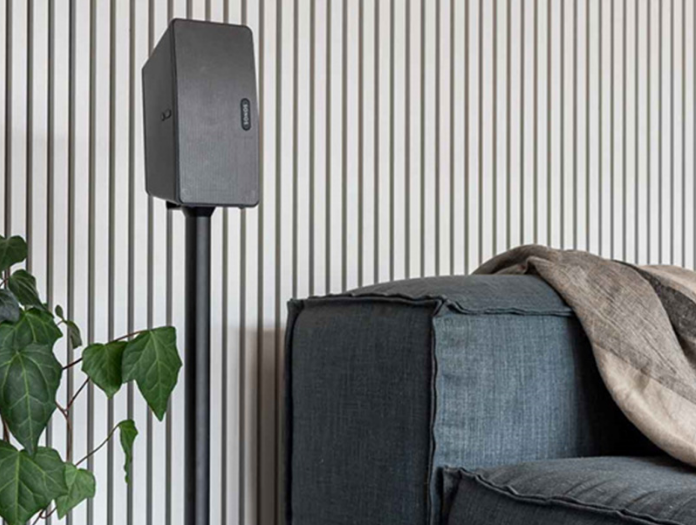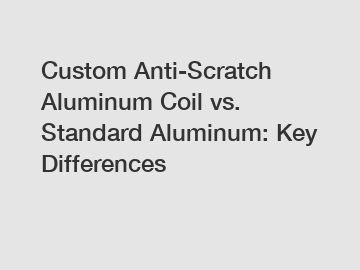Comparing Polyester Acoustic Panels vs. Traditional Panels
Jun. 25, 2024
Crafting a well-designed room involves more than just achieving visual aesthetics; it requires careful consideration of acoustics. Unfortunately, many designers focus solely on the room's appearance, overlooking the critical aspect of how sound behaves and interacts within the space.
However, noise control should not be an afterthought, especially when it plays a pivotal role in the design equation. This is particularly crucial in spaces where acoustic quality is paramount, such as theaters, conference rooms, or music studios. Achieving the right balance of soundproofing, sound absorption, and sound diffusion becomes indispensable.
Given the diverse range of options available, encompassing traditional materials and contemporary innovations like polyester acoustic panels, selecting the appropriate eco-friendly soundproofing solution can significantly impact both the auditory and visual experience of a room.
In this context, let's delve into a comparison between traditional panels and polyester fiber acoustic panels.
Sound Absorbing vs Sound Proofing
When addressing noise-related issues, many individuals often search for terms like "soundproofing" and "sound-absorbing." While these terms might appear interchangeable, they actually denote two distinct aspects of noise control. The specific sound issue you intend to address will determine the type of acoustic treatment and the materials employed.
Soundproofing is a technique focused on preventing sound from entering or exiting a space. It necessitates the utilization of dense and airtight materials within the walls, ceilings, or floors to reflect sound and impede the transmission of vibrations. Commonly employed materials for soundproofing include:
1. Vibration-dampening compounds like Green Glue
2. High-density barriers like Mass Loaded Vinyl (MLV)
3. Specialized drywall
4. Resilient sound isolation clips
Sound absorption is a method that focuses on enhancing the sound quality within a room by minimizing echoes and reverberations. This is achieved by applying soft, lightweight materials to the surfaces of walls, ceilings, and floors to absorb sound waves. Commonly used materials for sound absorption include:
1. Acoustical panels
2. Innovative materials like Wood Wool or Echo Eliminator
3. Fabric-coated acoustic panels
4. Traditional acoustic foam panels or stretchable wall systems
Both soundproofing and sound absorption are crucial for enhancing the acoustic properties of your room. Choosing the appropriate materials and techniques depends on your specific needs, the room's function, and the types of sound you aim to control.
With that in mind, as we compare and contrast various acoustic panel types, our primary emphasis is on sound absorption.
What Are Acoustic Panels?
Typically, when sound waves freely bounce around a room, it leads to echo and reverb, distorting the sound within the space. These sound waves can continuously rebound off the walls, colliding and mixing, exacerbating audio distortion.
Controlling noise in any given space involves a complex calculation, taking into account the room's size, shape, surfaces, and the points of first reflection. Generally, larger rooms require more significant attention to sound control.
To address common issues of echo and reverb, one effective method is to install soundproofing acoustic wall panels. These soft-furnished panels can be strategically placed on a room’s walls and ceilings to minimize echo and reverb.
Related links:
What Are the Benefits and Applications of Self-Adhesive Fiberglass Mesh Tape?
Ultimate Guide to EPS Self Adhesive Mesh
Maximizing Efficiency with Dosatron Dosing Pump Tips
Unleashing the Power of the Fireproof Cloak
How do I properly use a Fiberglass Welding Blanket?
4 Tips for Choosing a PE Tarpaulin With Buckle
Benefits and Applications of Foil Faced Phenolic Duct Insulation Board
Acoustic panels contribute to noise enhancement in two complementary ways:
1. Absorbing sound waves – The primary acoustic function of panels is to absorb a substantial percentage of a sound wave’s energy. Their porous structure enables sound waves to enter the absorbing core while preventing them from escaping.
2. Scattering sound waves – Unwanted noise often arises from sound waves reflecting back to their source, causing reverb. Panels with curved surfaces or flat surfaces with varying depths can scatter and diffuse sound waves around the room.
Pros and Cons of Traditional Acoustic Panels
In the initial stages of architectural acoustics, sound control primarily centered around large structures such as churches and theaters. Early solutions involved heavy cloth sheets and curtains, paving the way for more inventive approaches such as fiberglass batts covered in burlap or Rumford ceramic sound-absorbing tiles.
As urbanization expanded and the societal demand for private and quiet spaces grew, soundproofing evolved, leading to the development of acoustic panels specifically designed for this purpose. The initial models were crafted from materials that remain widely used today, including rock wool, fiberglass, or egg crate foam.
Pros:
1. Affordability: Traditional acoustic panels are often the most budget-friendly option, offering decent soundproofing and diffusion capabilities at a relatively low cost, making them particularly attractive for soundproofing larger spaces.
2. Ease of Installation: Designed for quick and straightforward installation, traditional acoustic panels don't require specialized knowledge or licensing, making them accessible for easy setup.
3. Proven Effectiveness: With decades of deployment and refinement, panels made from materials like fiberglass and rock wool have stood the test of time, demonstrating their effectiveness in absorbing sound and reducing echo and reverb.
Cons:
1. Aesthetic Limitations: Traditional materials, especially egg carton foam, may not align with the sleek and modern appearance often sought in contemporary designs. While they enhance sound quality, they may compromise the visual appeal of a room.
2. Potential Health Risks: Materials like fiberglass demand careful handling to prevent skin irritation, and prolonged exposure can lead to respiratory issues. Additionally, in the event of a fire, many of these materials do not meet modern fire safety standards and may emit toxic fumes or contribute to the spread of flames.
3. Sound Quality Constraints: Despite being effective sound absorbers, traditional panels have limitations in their frequency range, primarily absorbing sounds at certain frequencies. This poses a challenge, particularly with low frequencies.
Pros and Cons of Polyester Fiber Acoustic Panels
The landscape of acoustic panels has undergone continuous evolution, with sound engineers and architects continuously devising inventive solutions to tackle diverse acoustic challenges. Polyester stands out as a noteworthy material that has garnered significant attention in the realm of acoustic paneling.
Polyester, a synthetic fiber derived from coal, air, water, and petroleum, plays a pivotal role in crafting acoustic panels that are not only lightweight but also versatile and exceptionally efficient in absorbing sound.
Pros:
1. Superior sound absorption – Advanced panels excel in absorbing a wide frequency range, particularly at low and high frequencies. Specific polyester sound absorption panels are designed for handling targeted frequencies, such as low-frequency bass traps used in music studios.
2. Aesthetic enhancement – Polyester panels offer a range of colors, shapes, designs, patterns, and depths, providing greater versatility in interior design. This allows for an optimal balance between visual appeal and enhanced acoustics.
3. Smaller and lighter panels – Polyester panels are lightweight and easily installable. They can be cut into various shapes and sizes to suit specific room dimensions, and their natural lightweight properties contribute to a lighter building structure, simplifying the construction process.
4. Enhanced fire protection – Polyester panels adhere to national flame retardant and fire safety standards. They may be classified as Class A flame-retardant panels or fully flame-retardant panels, providing an added layer of security.
5. Environmentally friendly – Polyester fiber acoustic panels are often crafted from eco-friendly and recyclable materials, making them a more sustainable option than conventional solutions. Leading products typically exhibit low VOC emissions, meeting CDPH V1.2 test standards.
6. User-friendly – Top-quality products are non-allergenic, non-toxic, and free from chemical irritants.
7. Pleasing tactile quality – Polyester acoustic foam panels introduce a softness and warmth to a room that can be both seen and felt.
Cons:
1. Cost – High-quality polyester fiber acoustic panels may incur higher upfront costs compared to some traditional materials, although this could be mitigated by their durability and extended lifespan.
2. Non-recyclable – Some polyester panels are not recyclable, diminishing their sustainability as an end-of-life product.
Related links:The Advantages of Choosing Bamboo Flooring for Sustainable Homes
Choosing Aluminum Coil for Window Frames: A Complete Guide
The Advantages of Choosing 7 Wire PC Strand Zinc Coated
4 Advice to Choose a High-Quality Wire Mesh
How to Choose Custom Width Aluminum Coil Options?
How to Select Custom Width Aluminum Coil?
How High Reflectivity Aluminum Coil Enhances Energy Efficiency?
158
0
0
None
None
Related Articles
-
High Reflectivity Aluminum Coil: Boost Efficiency & Savings!
High Reflectivity Aluminum Coil: Boost Efficiency & Savings!
66
0
0
-
62
0
0
-
64
0
0
-
63
0
0
-
68
0
0
-
36
0
0
-
Enclosed Anchor vs. Traditional Anchor: Which One Performs Better?
Understanding AnchorsAnchors play a crucial role in the building and construction industry.
41
0
0
-
32
0
0











Comments
All Comments (0)